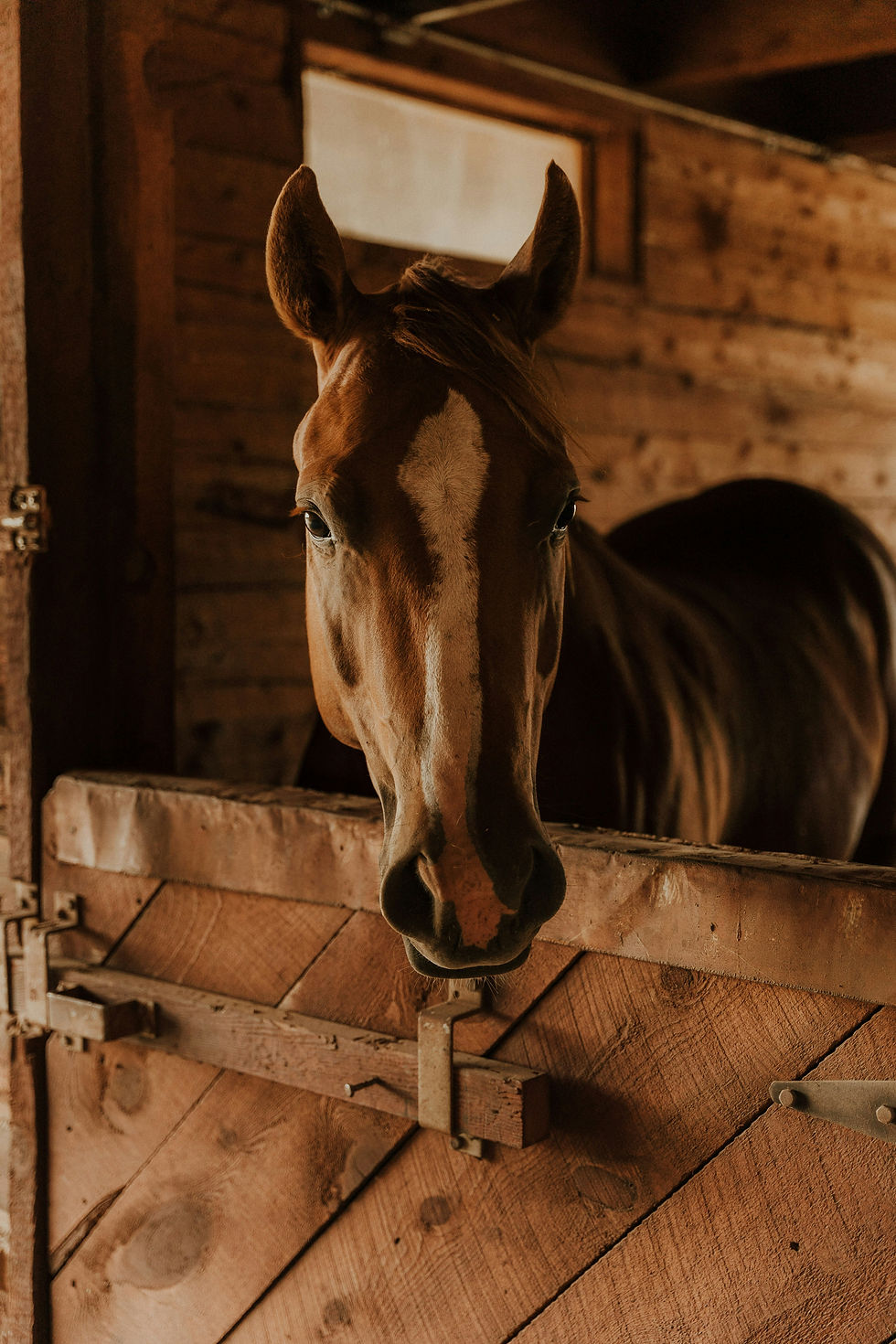Fall Horse Care – Why Hay Quality Matters
- Oliver Mobile Vet Team

- Sep 20
- 1 min read

Why Hay Matters in Fall & Winter
As pastures thin out in the fall, hay becomes the foundation of your horse’s diet. The quality of that hay can make the difference between a healthy, thriving horse and one struggling with weight loss, colic, or other health issues.
According to the University of New Hampshire Extension, good hay should be leafy, green, and free of dust or mold. Poor-quality hay not only provides fewer nutrients, but it can also irritate a horse’s respiratory system and cause digestive problems (UNH Extension).
What to Look For When Checking Hay Quality
Smell: High-quality hay should smell clean and fresh. A musty or moldy odor is a red flag.
Color: Green hay generally indicates higher nutrient content. Brown or sun-bleached hay may be less nutritious.
Texture: Leaves should feel soft and pliable. Overly coarse stems are harder for horses to chew and digest.
Dust & Mold: Break open a bale—if you see dust clouds or mold inside, it’s not safe to feed.
Oklahoma State University Extension notes that evaluating hay with sight, smell, and feel is the first and most reliable step in choosing forage for horses (OSU Extension).
Why It Matters
Feeding low-quality hay can lead to:
Nutrient deficiencies that cause weight loss or poor condition
Digestive issues such as colic
Respiratory irritation from mold or dust
Investing the time to check your hay now ensures your horse stays healthy and strong throughout the colder months.
📞 Call Oliver Mobile Veterinary Services at 419-345-1093 for guidance on hay evaluation and winter feeding strategies.🌐 Visit us at olivermobilevet.com



